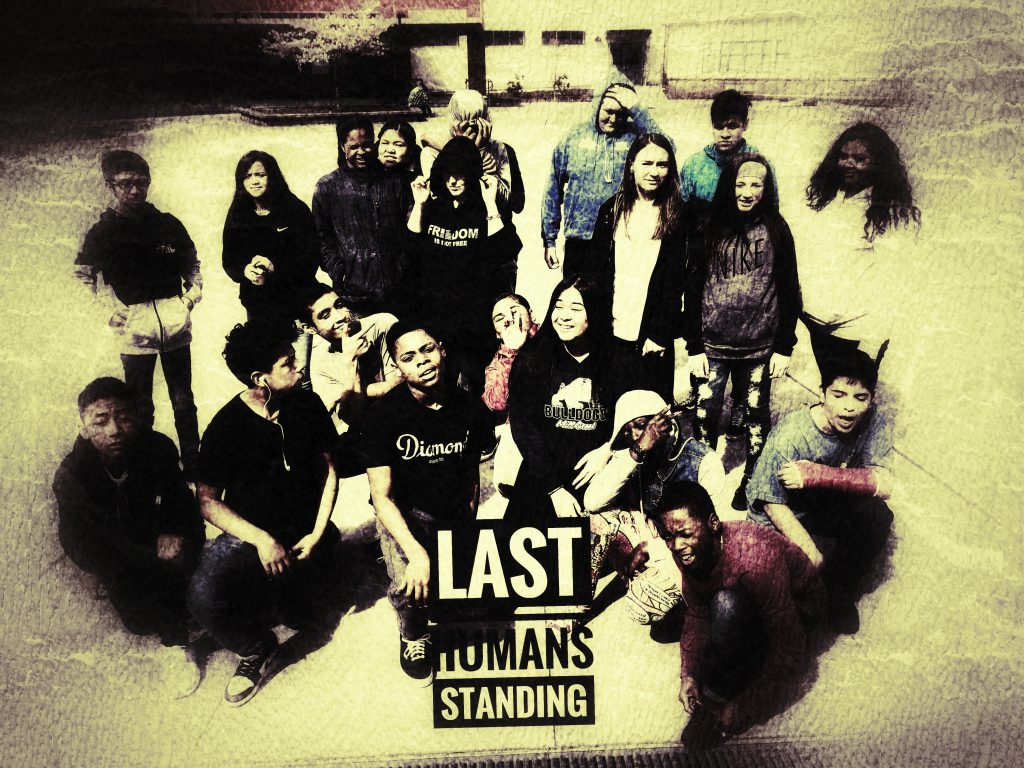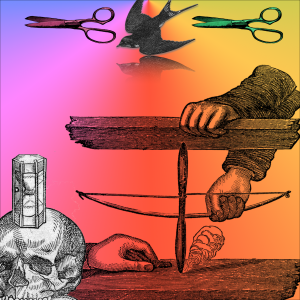This will be a long post: I am retracing my steps on the creation of a unit. TL:DR: Zombies and survival themes are great for 8th-grade students. E-mail me if you want resources or have questions.
One of my teammates Nate had a fantastic idea for argumentative work:
Zombies.
With the help of my teammates Nate, Sabrina, and the Notice & Note social media site, especially Beth Crawford, we unleashed zombies. Trying to put together a unit without common planning or time to meet (each of us is in different phases in life: I could work on units all weekend, and I did over mid-winter break, but it’s better to collaborate with trustworthy, competent folks). We did the best we could, and it needs tweaking and refinement, but out of the box—not too shabby!
I put the call out to Notice and Note and received many great ideas. Beth Crawford followed up with Google docs resources, etc. Some things had to be left behind, and some were added without assessment concepts nailed down. But then again, when you’re dealing with flesh-melting concepts, it’s hard to nail anything down.

The Lumbering Steps:
- Overview: this needs work, no doubt: [embeddoc url=”https://blog0rama.edublogs.org/files/2017/04/Zombie-Unit-Overview-1gfayti.pdf” download=”all” viewer=”google”]
- Personality Inventory (aka “Body Armor”)
- Rationale: students would discover their own personality traits, both figurative and literal, that add positive benefits for working with other partners. The goal was to have them create a personality inventory and share their strengths and advantages with others.
- What worked: students like knowing where they fell on a quasi- Meyers-Briggs scale and gamer’s quiz.
- What needs to be better: more time, and more explanation on how their inventory works with other personalities, or what pitfalls they might encounter. Critically thinking about attributes is one of the most difficult things to do.
- We first used this document:
- But then I changed my students’ work to thinglink.com
- Top Ten Survival Items
- Partner: pare down to fifteen items out of the twenty: You know you’ve succeeded when a group of kids argues about duct tape versus rope for twenty minutes.
- Rationale: coming up with important items in times of scarcity for survival, and perhaps how to plan ahead (we are in earthquake territory, after all)
- Annotated Bibliography
- [embeddoc url=”https://blog0rama.edublogs.org/files/2017/04/annotated-bibliography-zombies-ukxtgo.pdf” download=”all” viewer=”google”]
- Rationale: having students curate their resources for research using an annotated bibliography would help them understand the importance of discerning and critiquing articles closely and carefully.
- What worked: It served the purpose of getting kids to read, and by golly, they did really try: not sure how many I have turned in, but I know many of them were engaged in this. As soon as I re-introduced it as a “playlist” of a topic, the lightbulbs went off!
- What could be better: more time to read articles together, and more focus on truth, opinion and fact lessons.
- This is a poster my friend Sharon Clarke and I put together on our collective wisdom:

Sharon is the best.
- Integration:
- ELA: Argumentative Unit/Critical Thinking
- PE/Health: How does disease spread? How much would your backpack weigh? Could you run with that weight?
- Social Studies: how are civilizations created, and how do they fall? (Article about CDC funding being cut helped with this discussion.)
- Math: what is the rate of infection of disease?
- Science: what is a zombie? Are they possible?
- Electives: what would be worth fighting for? Thinking the line from Station Eleven — ‘survival is insufficient.’
- What worked about integration: we barely scratched the surface. Maybe next year we can get the whole school involved.
- Writing: the partner teams had to write a collaborative ‘end of world’ scenario. This writing will appear on their shared PowerPoint.
- What worked: they got this, mostly.
- What could be better: More time. (Seeing a trend here?) Students didn’t have time to fully craft their POV points in the story: the plan was to have them create a story together, and then write a first-person narrative on what they were doing when everything fell apart, and how they eventually met up and survived. Students who love role-play and writing jumped right on this: students who are not quite patched-in with their own creativity didn’t. But as all good growth mindset conversations end: YET.
8. Zombie Partner Shared PowerPoint: The partner created a shared PowerPoint with many of these pieces. One aspect was the “film” slide: add any multimedia possible that goes along with survival or zombies, or film themselves. Some kids used their webcams and shot pics/videos, others found videos on YouTube, etc.
9. Article Links samples:
Here are some articles, etc. I gathered so students could choose for their annotated bibliography:
- https://www.scientificamerican.com/article/do-zombies-exist/
- http://www.nbcnews.com/health/health-care/new-gop-health-care-bill-would-cut-fund-fight-killer-n730391
- https://www.forbes.com/forbes/welcome/?toURL=https://www.forbes.com/sites/kevinmurnane/2017/01/08/guess-how-many-people-will-survive-a-zombie-apocalypse/&refURL=&referrer=#158f6ade5e40
- http://www.cnn.com/2017/03/17/opinions/believer-haiti-vodou-polyne-mcalister/
There were more, most I posted in ActivelyLearn and Canvas.
What I didn’t get to do: a handcrafted survival guide.
Sigh.
Maybe next time.
What we will do: next week before spring break, I am giving them a choice of three writing prompts that are directly connected to SBA Brief Writes:
Mrs Love Zombie Presentation Final Survival
[embeddoc url=”https://blog0rama.edublogs.org/files/2017/04/Final-Survival-py46ze.pptx” viewer=”microsoft”]
Please let me know if you have questions, or want to add to this awesomesauce.








